MICROSCOPE-ANTIQUES.COM © 2013-16.
FINGERPRINT MAGNIFIERS:
SECOND TO THIRD QUARTER OF TWENTIETH CENTURY
| DESCRIPTION | HISTORY |
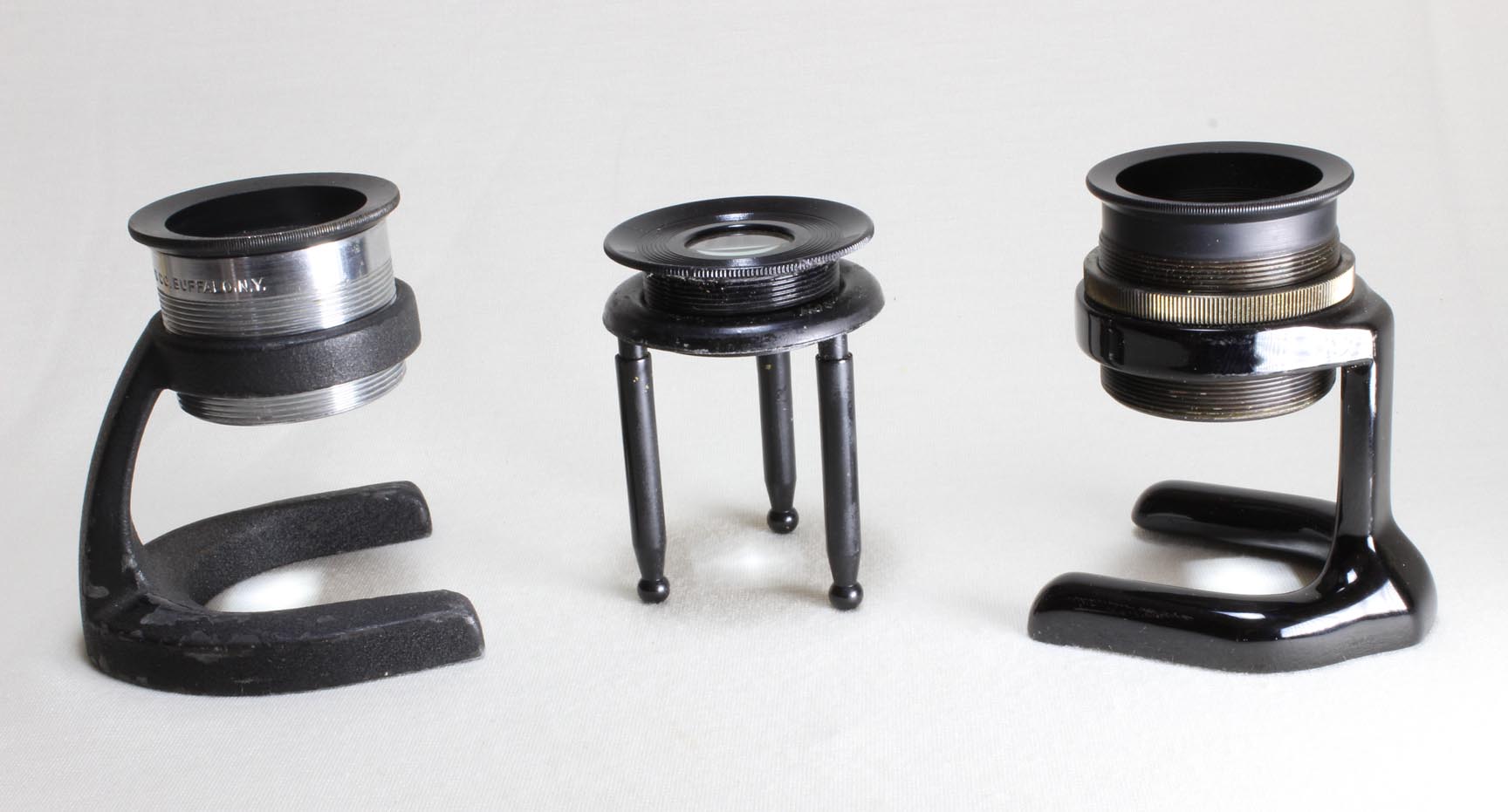
INTRODUCTION
Ideally a magnifier for examining finger prints should provide a sharply focused and flat wide field with a magnification of about 4 1/2 X and avoid the need to be close to the lens so as to limit fatigue. An achromatic aplanatic lens combination with large aperture and good eye relief would fit this requirement. Such magnifiers were available in the early twentieth century and soon were promoted for the purpose. Obviously these instruments were well suited to other purposes. Magnifiers with lenses nearly identical to these are still sold today by companies specializing in forensic tools, but the quality of the B & L and Spencer models on this page were never surpassed. The usual power for these is 4 1/2 X. Both B & L and Spencer called these magnifiers 'Utility Magnifier' without the slot in the foot to accept the Henry inserts, and 'Fingerprint Magnifier' when the slot was present.
DESCRIPTIONS
BAUSCH & LOMB 'FINGERPRINT MAGNIFIER', c. 2nd to 3rd Qtr of 20th C.
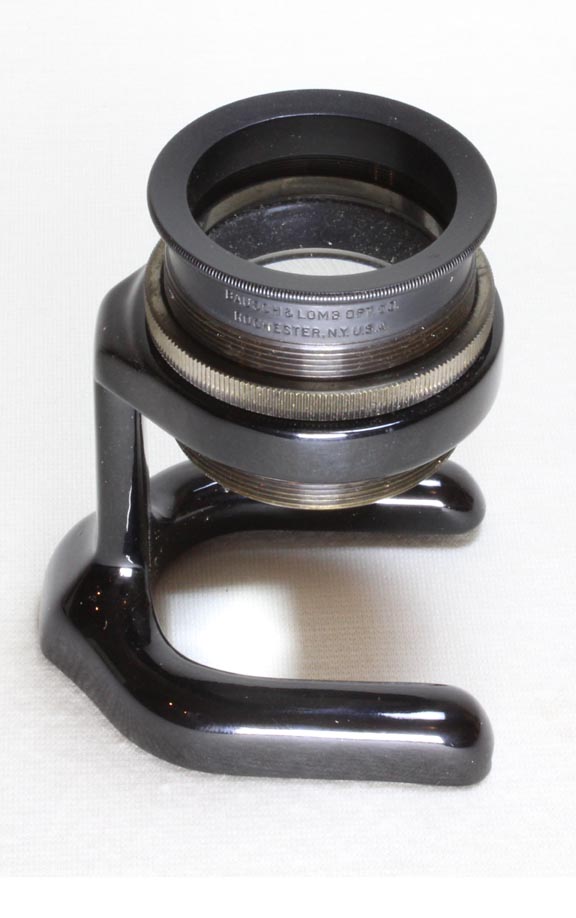
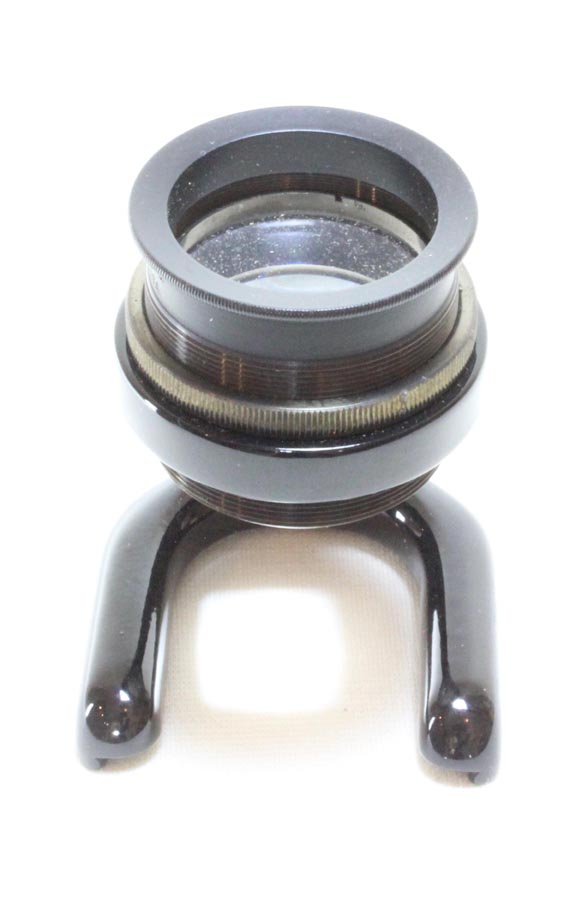
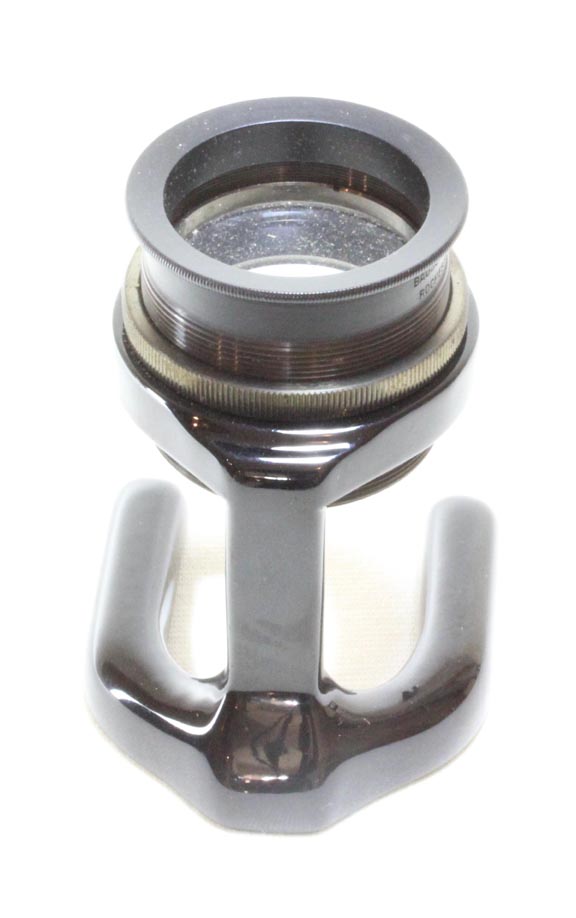
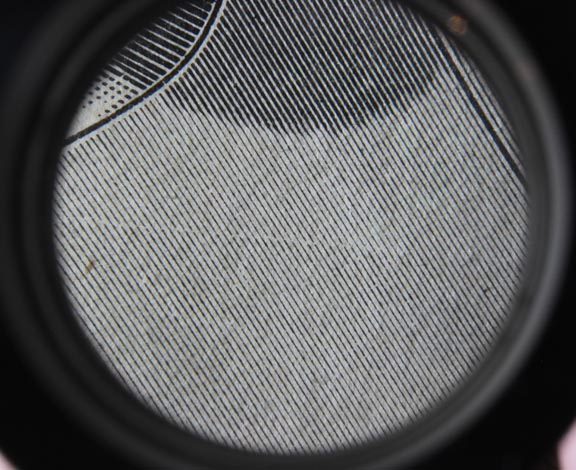 BAUSCH & LOMB 4 1/2 power magnifier on horseshoe base:
BAUSCH & LOMB 4 1/2 power magnifier on horseshoe base:
Bausch & Lomb advertised this magnifier no later than the second quarter of the twentieth century. Although all of its advantages were mentioned, it was not specifically promoted as a fingerprint magnifier initially; the box with this instrument does list it as a 'Fingerprint Magnifier' and is identical to the box for the next instrument on this page. The use of the postal code dates it to after 1940. Note that at the bottom of the instrument there is a dovetail slot in the horse shoe foot to accept inserts with a ball-bearing under one side of the foot to hold the insert in place. The earlier version of this instrument, shown here, has a gloss black finish; the later version, shown next, has a flat crinkle finish. The instrument shown here also has a locking ring to lock it in focus; this additional feature is advertised as a separate accessory to add to the functionality of the device. As can be seen in the image of an engraving taken through the lens, the entire field is sharp and flat.
As noted in a 1935 catalog:
'We have designed a 4 1/2 power magnifier, which is mounted on a horse shoe base and fully corrected for chromatic aberration, flatness of field, astigmatism, and distortion when the eye is held from 4 to 5 inches from the lens. The lens is 1 3/8" in diamter and mounted in a threaded ring which fits into the horse shoe base. Screwing the lens up and down permits the lens to be focused to suit the user.'
The notation suggests this was not officially marketed as a fingerprint magnifier until after the 1935 catalog. In the 1929 catalog, this microscope was referred to as the 'Utility Magnifier' though that name referred more to its many possible uses than its quality, as the quality is very high. In the 1940 B & L catalog, the 'Utility Magnifier' did not appear to have the dovetail slots that this instrument, and the following example both have, though in 1940, among the uses listed was for fingerprint analysis. The instrument is in excellent condition.
BAUSCH & LOMB 'FINGERPRINT MAGNIFIER', c. 2nd to 3rd Qtr of 20th C. (After 1942, newer model)
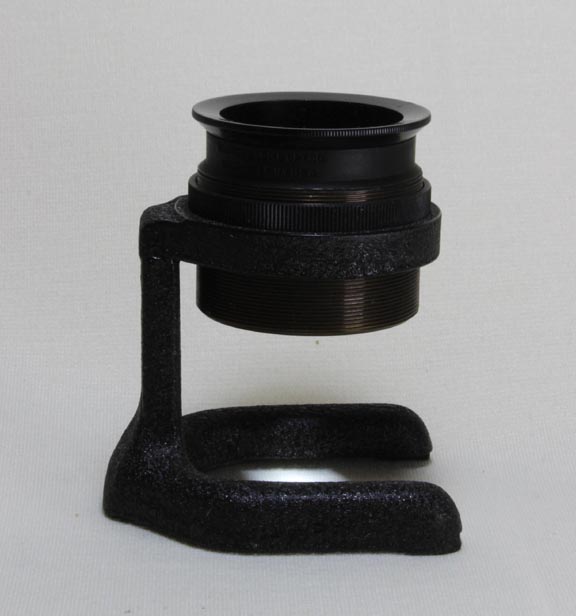
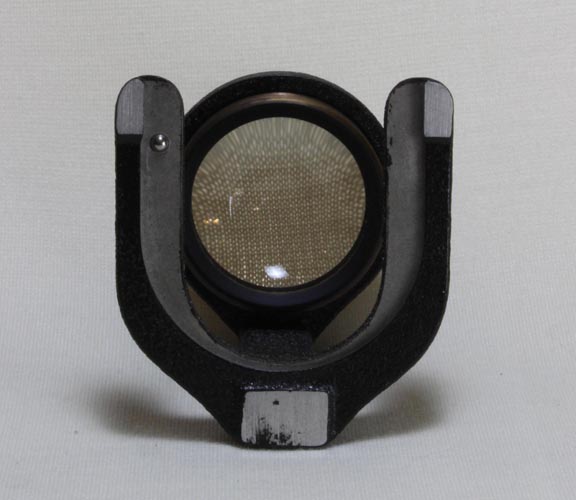
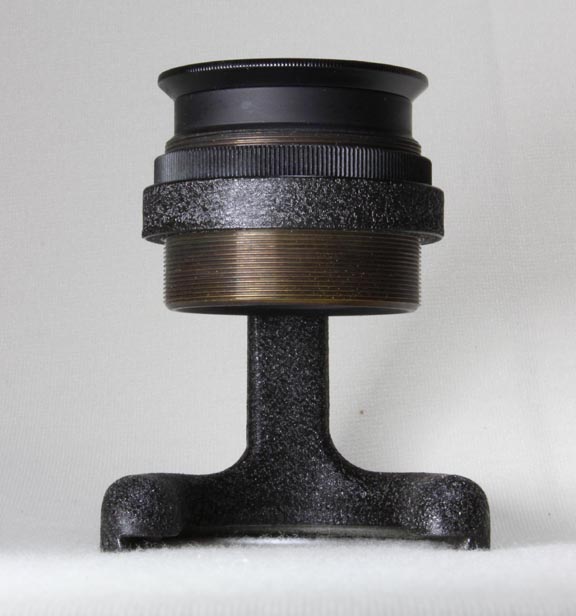
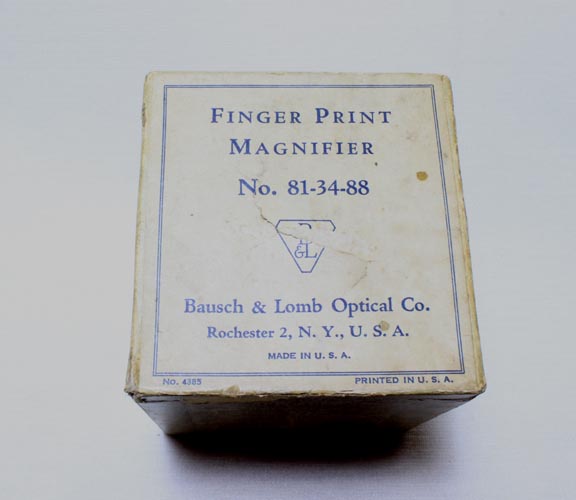
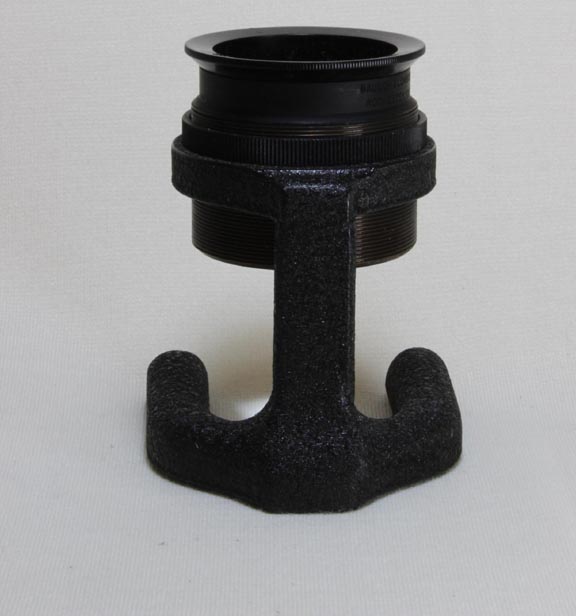
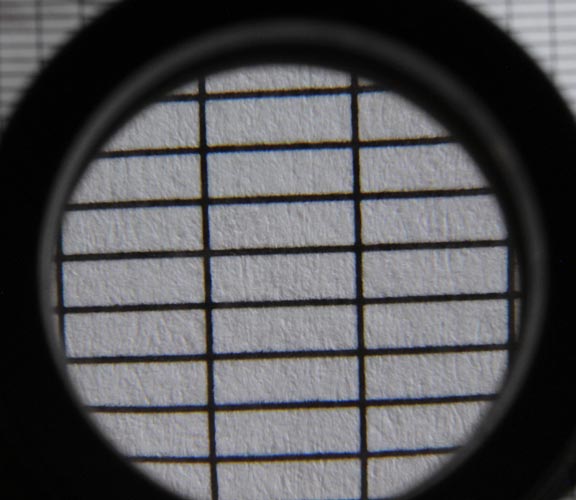
BAUSCH & LOMB 4 1/2 power magnifier on horseshoe base:
Bausch & Lomb. Note that at the bottom of the instrument there is a dovetail slot in the horse shoe foot to accept inserts with a ball-bearing under one side of the foot to hold the insert in place. This slightly later version of this instrument, shown here, has a 'crinkle' black finish; the earlier version, shown above, has a gloss black smooth finish. The instrument shown here also has a locking ring to lock it in focus; this additional feature was advertised as a separate accessory to add to the functionality of the device, and to my knowledge, was not offered for the Spencer/AO instrument. The box is in good condition but the microscope itself is in mint condition. The postal code on the box indicates the instrument was made after 1942.
SPENCER 'UTILITY MAGNIFIER'
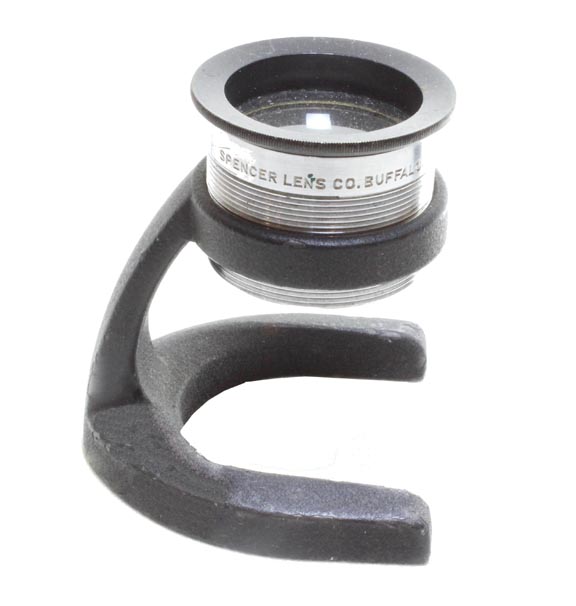
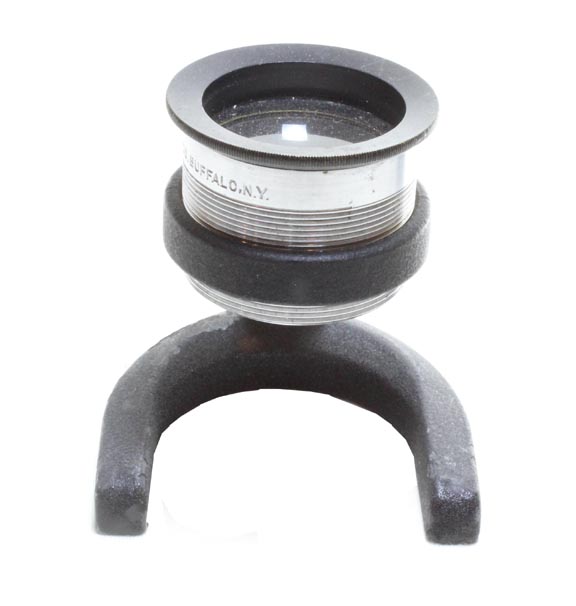
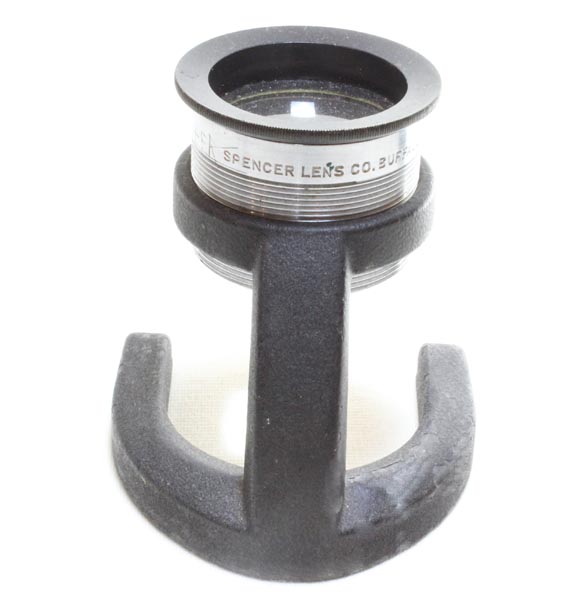
This magnifier, obviously in competition to the B & L examples is a very similar and was also called the 'Utility Magnifier'. It is signed 'SPENCER LENS CO. BUFFALO, N.Y.' It has a chrome plated barrel and no locking ring. It has a later type of crinkle finish, as did the later Bausch & Lomb variety, but this example does not have a slot in the foot to accept the inserts (which Spencer refers to as 'dispositives'). the 1946 Spencer example of this magnifier, seen in the next paragraph, does have that feature, and was therefore offically called a 'Fingerprint Magnifier'.
Spencer mentions in their catalog entries that the Utility model lacked the slot for the inserts which the official 'Fingerprint Magnifier' did have. The optical part of this instrument is in very good condition, though the foot has some losses of the black paint.
SPENCER 'FINGERPRINT MAGNIFIER' (circa 1947)
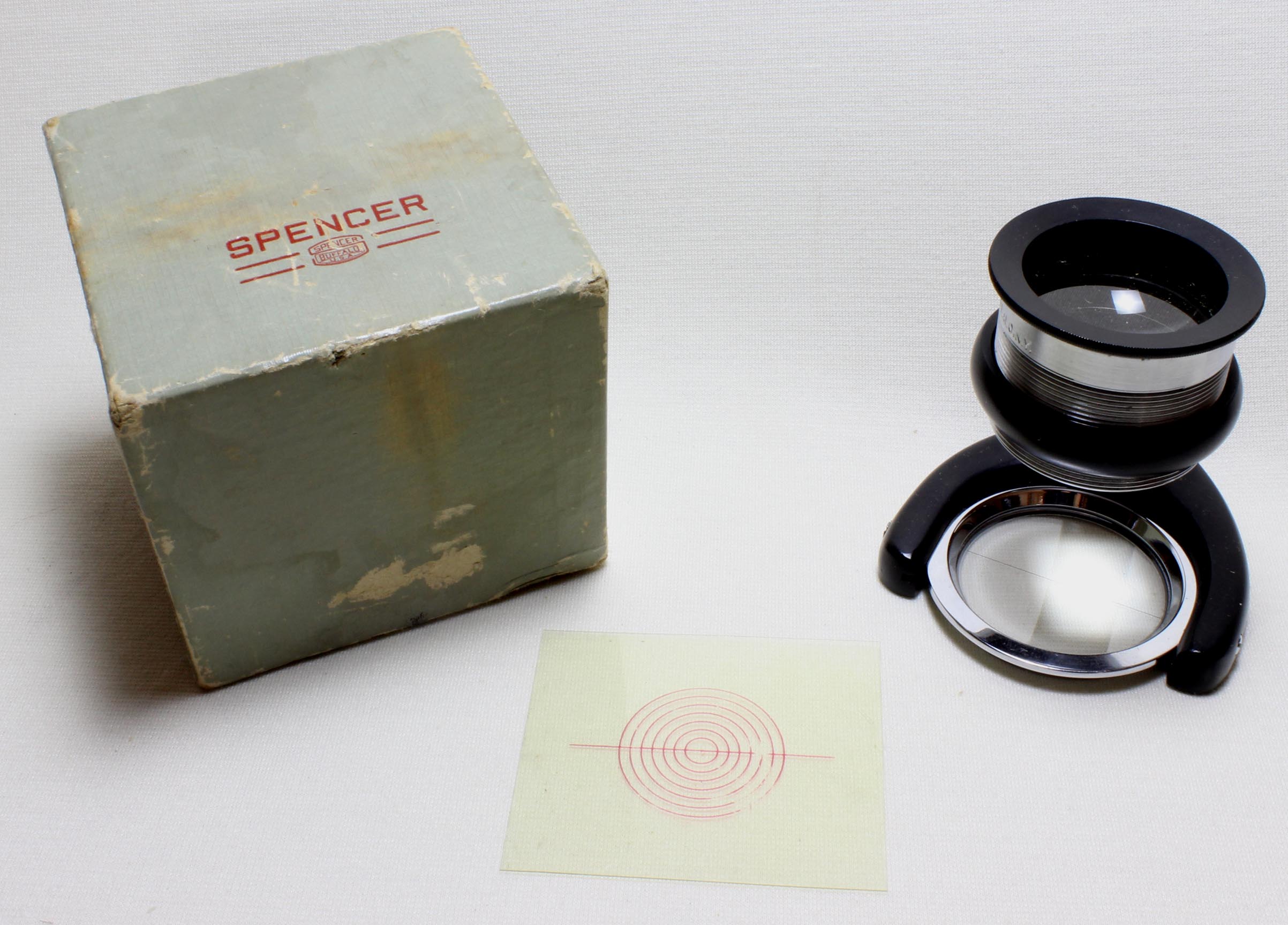
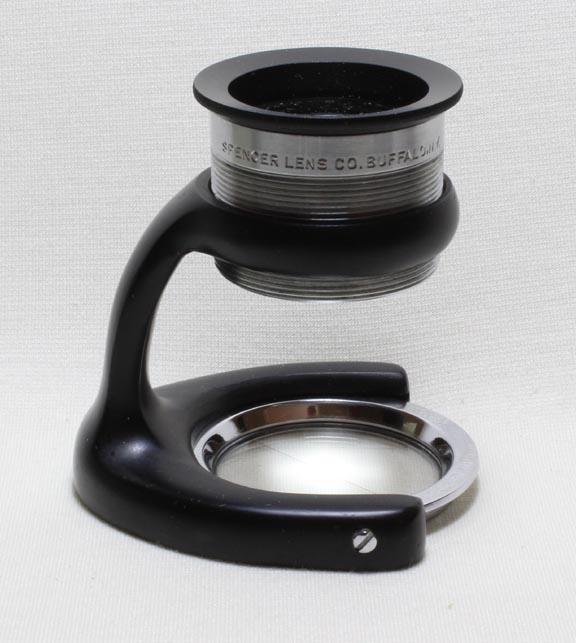
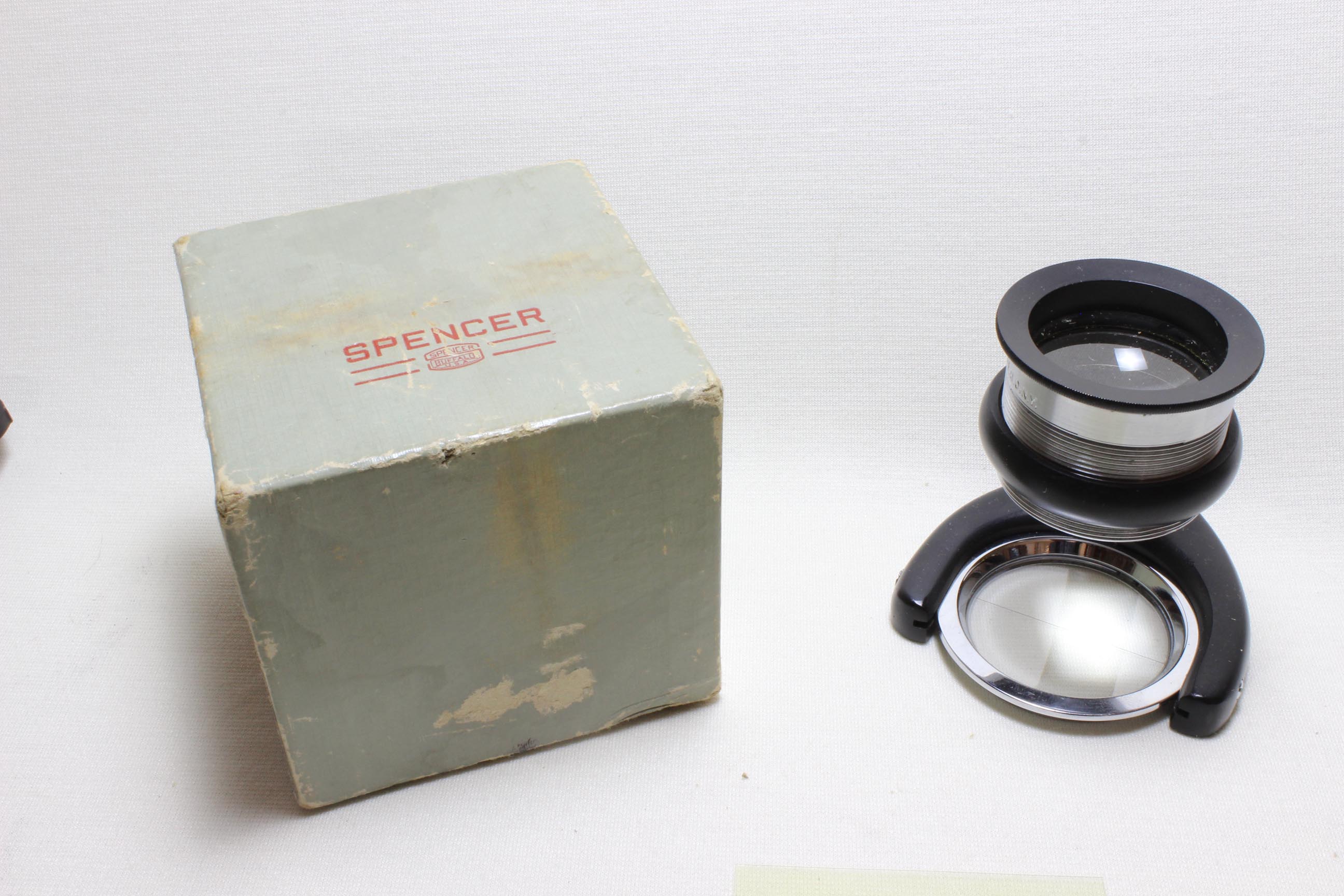
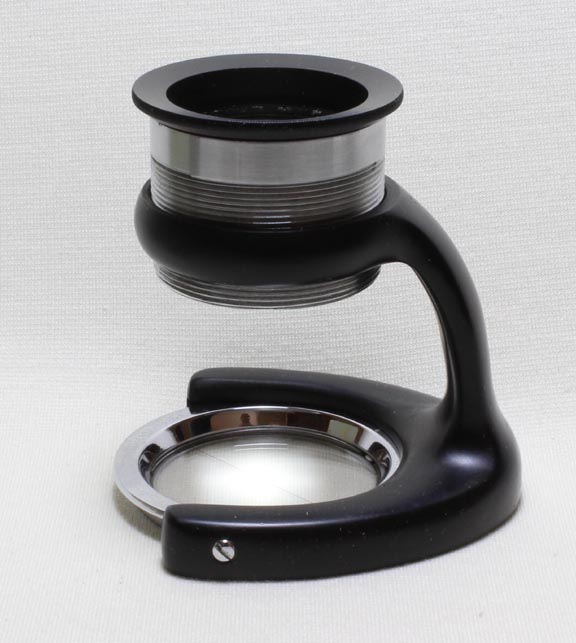
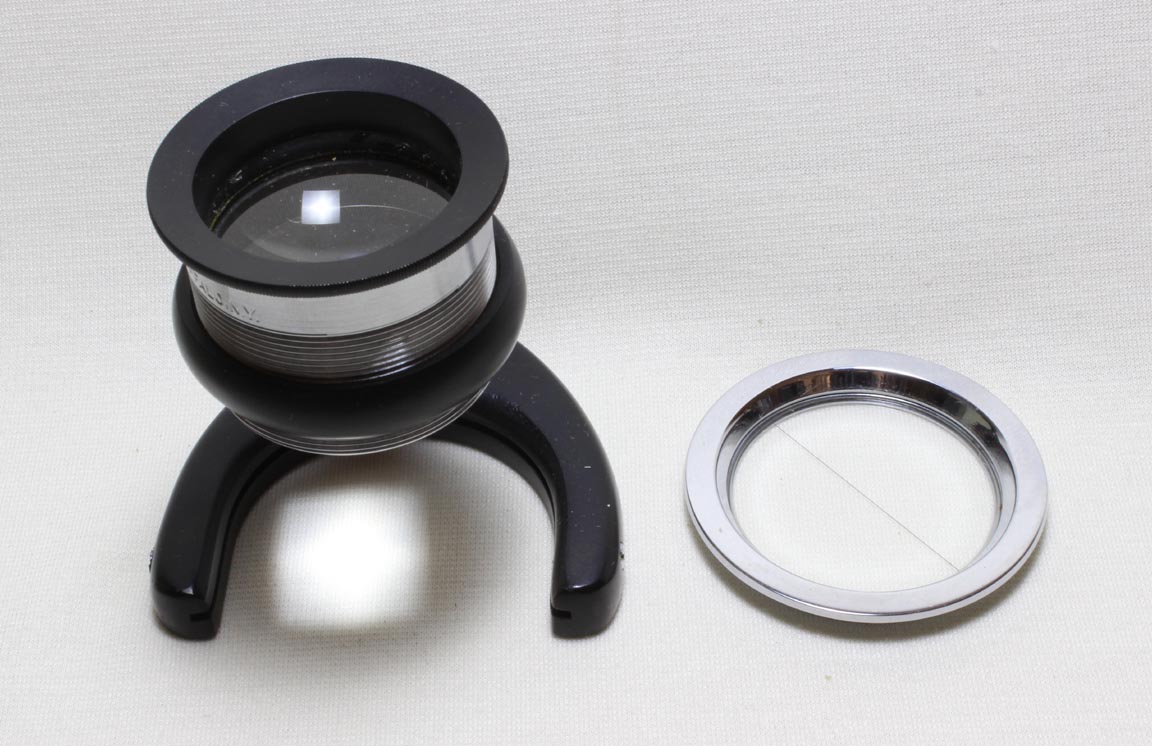
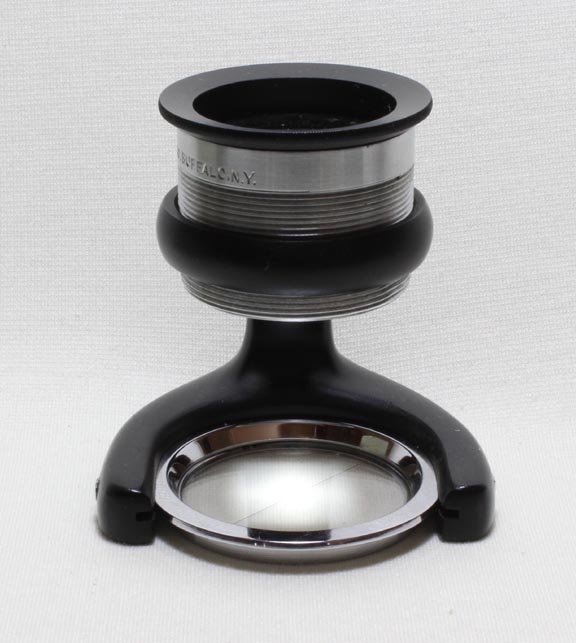
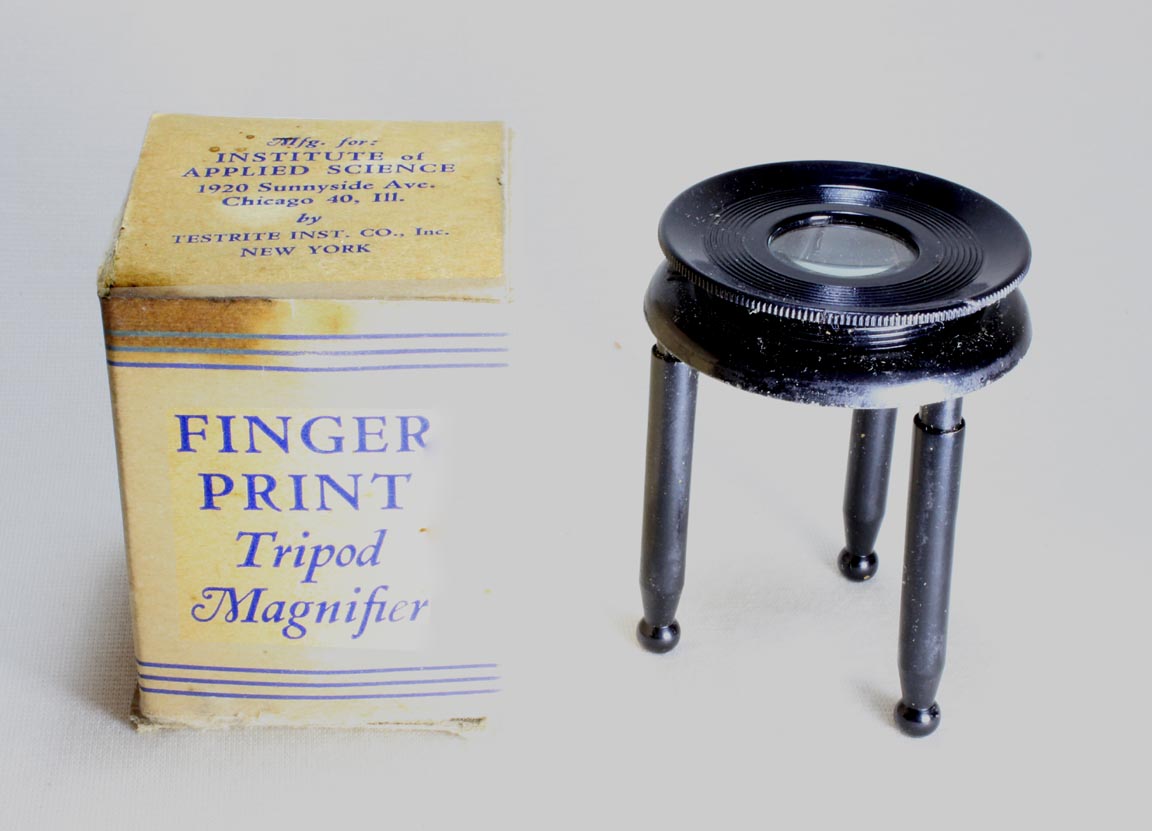
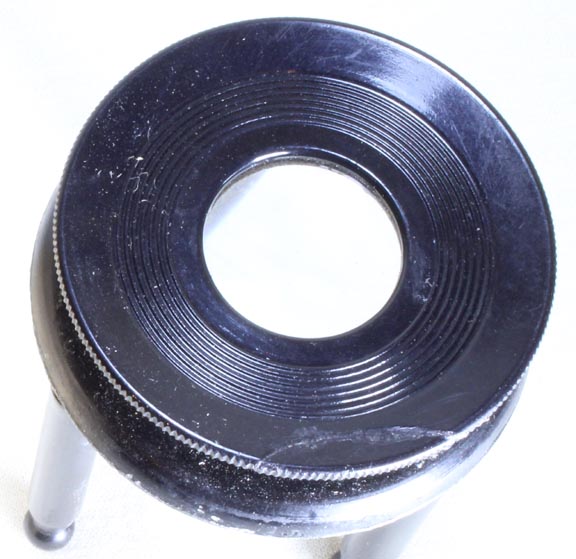 This magnifier closely resembles the brass tripod magnifiers made in large numbers during the nineteenth and early twentieth century but has a steel tripod frame and a bakelite main body. It is taller than the traditional little tripods and its lens is slightly bigger with a wider field of view than most of the old brass varieties. It is however, still grossly inferior in quality to the other two shown above, with a much smaller field of view than the Spencer and Bausch & Lomb types. The postal code indicates it was made after World War II started.
This magnifier closely resembles the brass tripod magnifiers made in large numbers during the nineteenth and early twentieth century but has a steel tripod frame and a bakelite main body. It is taller than the traditional little tripods and its lens is slightly bigger with a wider field of view than most of the old brass varieties. It is however, still grossly inferior in quality to the other two shown above, with a much smaller field of view than the Spencer and Bausch & Lomb types. The postal code indicates it was made after World War II started.